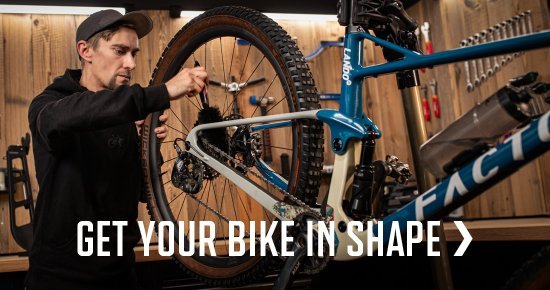Review: Tubolito – a tube-shaped revolution
Thermoplastic material, superior robustness and drastic weight savings, that’s the Tubolito specs. We have ridden more than 400 km with the tubes.
The bright orange Tubolito tube debuted at Eurobike 2017. Its patented manufacturing technology, which allows the production of seamless tubes and the use of high-tech thermoplastic elastomers instead of butyl rubber created a hype in the industry.
But who is behind this little revolution in the cycling world? When the two Austrian engineers and avid cyclists Christian Lembacher and Akos Kertesz were trying to come up with a material for durable smartphone speaker membranes, they had the bright idea to use it for bicycle inner tubes as well. The thermoplastic elastomer possesses several unique qualities that make it ideal for use inside of a bike's tyre.
It can be stretched to about four times its size and resists forces about twice as powerful as conventional tubes can. At the same time, the material is about 65% lighter.
All this sounds really good on paper, but we wanted to find out how these qualities combine in the final product and how well the tube holds up in practical use.
Lightweight actually means lighter than tubeless
The weight savings of the Tubolito are actually huge when compared to a common butyl tubes. A normal 29” tube weighs in at about 220 grams, the Tubolito at 75 grams. These lightweights do have a “heavier” price tag, at 30 € per piece, but it makes for weight savings of 290 grams of rotating mass on a 29er MTB.
If you think about it, the Tubolitos are actually lighter than tubeless solutions. Conservatively assuming that tubeless sealant weighs as much as water, so 1 gram per millilitre, and that one uses about 90-120 millilitres of sealant per tyre, the Tubolitos still come out between 5 and 25 grams lighter. Of course, a Tubolito tube can theoretically still suffer a puncture, but it sure saves you from messing with the nasty sealant.

Record-breaking 75g per tube, that's Tubolito!
Installation
The thermoplastic elastomer feels stiff and weird when taking the tube out of the package. But one immediately notices the weight difference. Installing the tube is more or less the same as with a conventional tube, however a few differences due to the new material and production process remain.
When inflating the tube for the first time without a tyre, the Tubolito actually forms a rectangular shape rather than a loop. No worries, as soon as you mount it inside the tyre, it moulds itself perfectly well. In the same manner, the valve might actually point outward instead of inward. Simply twist the tube and continue, it will stay in place once placed on the rim and inside the tyre.
Apart from these two peculiarities which have no negative effect on the performance, the Tubolito mounts just like any other tube. Mount one side of the tyre on the rim, slightly inflate the tube and place it inside of the tyre, then mount the second side of the tyre. After, inflate to the desired pressure and you are ready to go.

The initial inflation of the Tubolito does not always result in a round shape.

...the valve can also face outward. No worries, it does not cause any damage.
Let’s hit the trail
My co-worker Michael and I tested the tubes in different settings. Michael rides XC and AM and weighs in at 85 kg, being 194 cm tall. I’m only 185 cm and I pride myself on about 100 kg of body mass that I send regularly down gnarly and rough Enduro trails. Two very different use cases in order to make our review more relevant!
Michael rode the tubes at pressures between 1.8 and 2.2 bars on fast Cross Country courses while I prefer the traction of 1.4 bars on the front wheel and 2.0 bars in the back.
Frankly, the tubes weren’t noticeable while riding. Neither Michael nor I suffered a puncture during more than 400 kilometres of test-riding on various surfaces, during training rides and races. Be it roots, rock gardens, gravel or a mixture of all, the Tubolitos simply performed without loosing pressure.

Trust us, we were using the Tubolitos.

Actually, the orange valve stem gives it away.
Sizing and types
For MTB, the Tubolito is available in a regular and a super-light version called S-Tubo-MTB, each for 26", 27.5" and 29" respectively. The latter weighs in at a mere 45 grams in size 29". The Tubolito Road is due to reach the markets at the beginning of the 2018 season.
| Type | Size | Weight* |
|---|---|---|
| Tubo-MTB | 26" | 78 g |
| Tubo-MTB | 27.5" | 82 g |
| Tubo-MTB | 26" | 78 g |
| S-Tubo-MTB | 29" | 45 g |
| S-Tubo-MTB | 27.5" | 44 g |
| S-Tubo-MTB | 26" | 42 g |
| Tubo-MTB-Plus | 27.5" | 105 g |
| Tubo-MTB-Plus | 29" | 110 g |
| Tubo-Road | 700 C | 33 g |
*according to manufacturer
Our verdict
The Tubolito didn’t let us down even once during 400 kilometres of heavy riding on all kinds of ruthless surfaces. Its robustness, reliability and light weight make the revolutionary tube a serious alternative to conventional ones and even tubeless setups. The latter requires no hassling with the sealant and the Tubolito can be ridden at almost the same low pressures. It also makes for a very lightweight spare. Michael and I feel that the high-tech Tubolito is worth its hefty price and will both continue to use this easy weightsaver on our rigs. It's never been that easy and cheap to shave of serious amounts of weight from your bicycle, rotating mass that is.

































